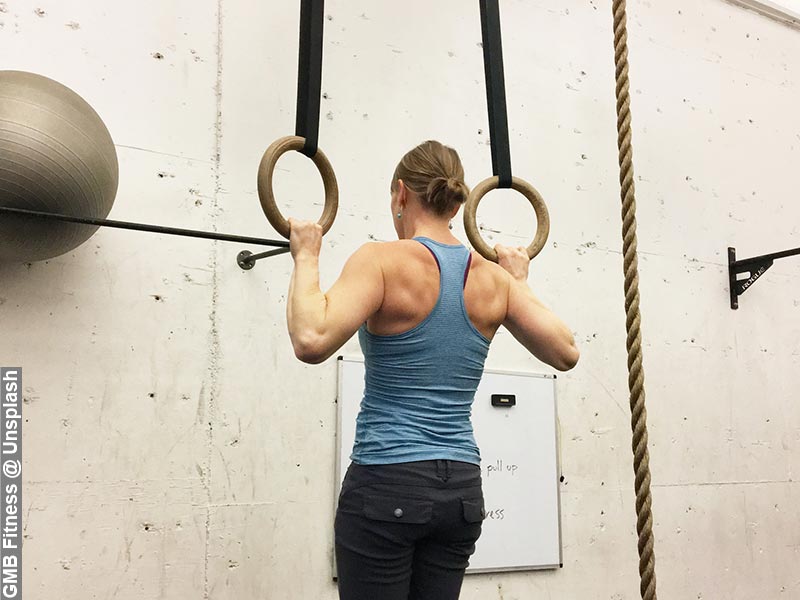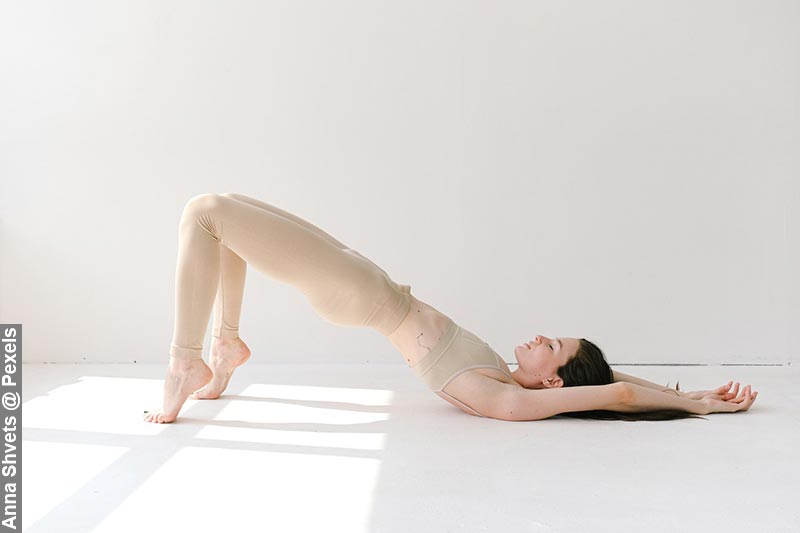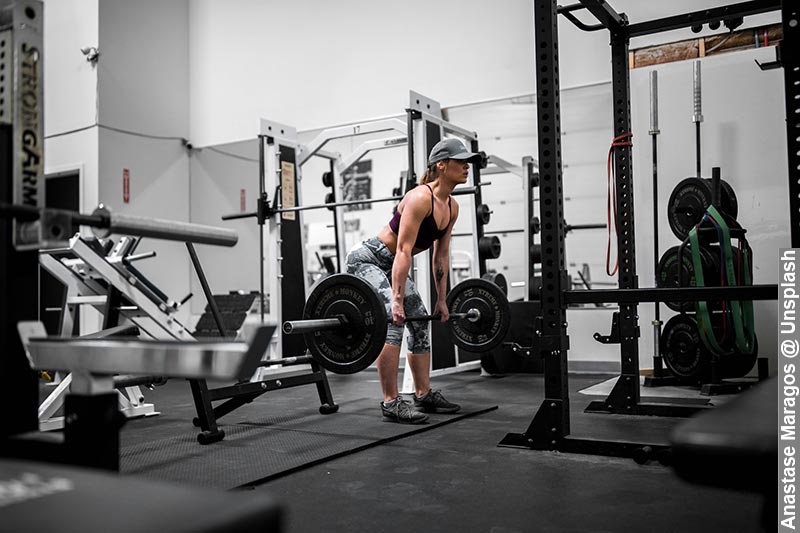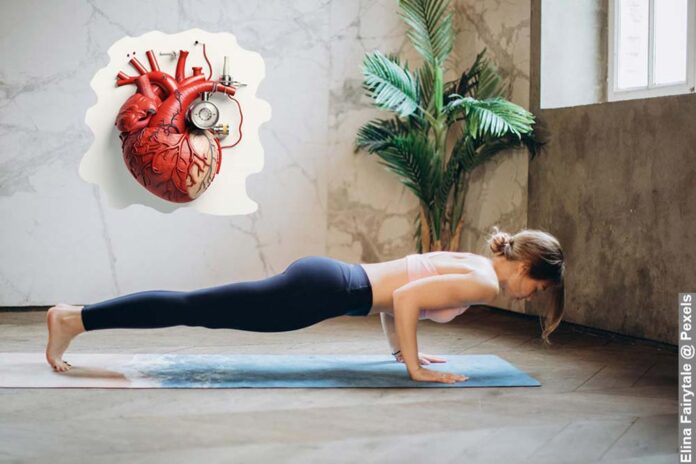Introduction – The Rising Concern of High Blood Pressure
Lowering high blood pressure with isometric resistance training is a topic that has recently gained attention in the health and fitness world. High blood pressure, or hypertension, is a growing health concern worldwide. It strains the blood vessels, heart, and other organs, increasing the risk of conditions such as heart attacks and strokes.
While treatment often involves medication, patients are advised to eat healthily, reduce alcohol intake, stop smoking, and exercise regularly. A BBC article recently highlighted a study suggesting that strength-training exercises such as wall squats or holding the plank position are among the best ways to lower blood pressure. However, the research paper focuses on isometric exercises, a type of strength training involving static muscle contractions.
This blog post will examine the research behind lowering high blood pressure with isometric resistance training. I aim to comprehensively understand the topic backed by scientific research. And offer practical advice on incorporating isometric exercises into your routine for managing high blood pressure.
Let’s explore the power of isometric resistance training in lowering high blood pressure.

Understanding Hypertension – The Silent Killer
Hypertension, or high blood pressure, is a silent killer. It’s a condition where blood pressure in the arteries is persistently elevated. This can lead to serious health problems like heart disease and stroke.
Many people with hypertension don’t know they have it. There are often no symptoms, making regular check-ups vital. It can cause damage to the heart and blood vessels. Over time, this can lead to heart failure or kidney disease.
It’s important to manage hypertension. Lifestyle changes and medication can help control blood pressure and reduce the risk of complications. For more detailed information, this article provides a comprehensive overview of hypertension.
Remember, regular check-ups can help detect hypertension early. It’s a silent killer but can be managed effectively with the proper care.
Lowering High Blood Pressure with Isometric Resistance Training – A Recent Study
The recent study that sparked this blog post’s creation examined the potential benefits of isometric resistance training on high blood pressure. The researchers conducted an extensive analysis, utilising data from over 15,000 individuals across 270 clinical trials.
Their findings were compelling. The study demonstrated that isometric resistance training involving static muscle contractions could significantly lower high blood pressure. This revelation provides a new perspective on managing hypertension, suggesting that specific exercise types could be as crucial as regular physical activity.
The study’s results highlight the potential of isometric resistance training as a non-pharmaceutical intervention for high blood pressure. It underscores the importance of incorporating such exercises into our routines, not just for physical fitness but for our overall health.
In the following sections, we’ll delve deeper into the concept of isometric resistance training and explore other supporting studies that reinforce these findings.
Supporting Evidence – Other Studies on Isometric Resistance Training
The recent study we discussed is one of many research shedding light on the benefits of isometric resistance training for high blood pressure. A growing body of evidence supports this approach, reinforcing the potential of isometric resistance training in lowering high blood pressure. This aligns with our focus on lowering blood pressure with isometric resistance training.
A study observed significant reductions in blood pressure after just a few weeks of isometric resistance training. This suggests that individuals can start seeing health benefits relatively quickly, making isometric resistance training a practical option for those seeking quick results in blood pressure management.
Another research focused on 12 weeks of isometric exercise and found a significant reduction in systolic and diastolic blood pressure. This further reinforces the effectiveness of isometric resistance training in managing high blood pressure.
A comparison of the antihypertensive effects of isometric resistance training with aerobic exercise found both effective. However, isometric resistance training had a slight edge regarding reducing systolic blood pressure. This highlights the potential of isometric resistance training as a viable alternative to traditional aerobic exercises for blood pressure management.
Another study confirmed that isometric resistance training can indeed reduce blood pressure in adults with normal to high-normal blood pressure. This suggests that isometric resistance training can benefit even those at the lower end of the high blood pressure spectrum.
These studies collectively support the effectiveness of isometric resistance training in lowering high blood pressure. They highlight the potential of this form of exercise as a practical and effective strategy for blood pressure management. Further emphasising the importance of lowering high blood pressure with isometric resistance training.

Lowering High Blood Pressure with Isometric Resistance Training – A Variety of Exercises
Isometric resistance training is a form of exercise that involves contracting your muscles against a non-moving object. This type of training effectively lowers high blood pressure with isometric resistance training.
Isometric resistance training improves strength, endurance, and flexibility. It can be performed using your body weight or weights, and various exercises can target different muscle groups.
Body Weight Exercises Example – Lowering High Blood Pressure with Isometric Resistance Training
Body weight exercises are a type of resistance training where your own weight is used as resistance. These exercises are convenient as they require no equipment and can be done anywhere. Here are some examples:
Wall Sit: This exercise strengthens your thighs, particularly your quadriceps muscles.
- Position yourself about 2 feet from a sturdy wall and lean against it.
- Bend your knees and lower your body until your knees form a 90-degree angle.
- Your body should resemble the posture you have when sitting in a chair.
- Maintain this position for at least 15 seconds.
- Ensure your hips and shoulders remain in contact with the wall and your knees are positioned over your ankles.
- Repeat this exercise 2–3 times.
High Plank Hold: This exercise engages multiple muscles in your body.
- Begin in a kneeling push-up position with your hands placed shoulder-distance apart.
- Press your hands into the ground and straighten your knees, pushing down into the balls of your feet to raise your body into a high plank position.
- Your body should resemble the upward position of a push-up.
- Ensure your hands and shoulders are aligned, your legs are straight, and your core is engaged.
- Maintain this position for 20 to 60 seconds, or as long as you can maintain proper form.
- Repeat this exercise two more times.
Side Plank: This exercise is excellent for engaging your obliques on your midsection’s sides.
- Lie on your left side with straight legs, keeping your hips, knees, and feet stacked.
- Bend your left elbow and place your forearm on the ground under your shoulder.
- Push your left forearm into the ground to lift your torso and hips off the ground.
- Keep your core tight and make a straight line from head to heel.
- Lift your right arm straight into the air, or keep it by your side.
- Maintain this position for 10 or more seconds.
- Then, switch sides.
Low Plank: This exercise requires core and upper body strength and body awareness.
- Get on all fours with your feet together, arms straight, body straight from head to heels, and your hands in line with (but slightly wider than) your shoulders.
- Clench your glutes, draw your shoulders down, and brace your core to lock your body into position.
- Hold until fatigued.
Low Squat: This exercise works your lower body.
- Stand with your feet slightly more than hip-width apart. If it’s more comfortable, your toes may be pointed slightly out with your hands on your hips or held straight out in front of you.
- Slowly push your hips back into a sitting position while bending your knees. Avoid driving your knees forward.
- Continue to lower yourself until your butt is slightly below knee level. If you can’t go further, lower yourself until your thighs parallel the floor. Keep your feet planted with heels down and your spine long without rounding forward.
- Hold this position for 10–30 seconds. Then, return to the starting position.
- Perform 3–5 sets.
Split Squat: This exercise targets your lower body.
- Take an athletic stance with the back straight and core engaged, then step into a lunge position.
- Make the pose more challenging by sinking down until your front knee is bent to 90 degrees and your back knee nearly touches the floor.

Glute Bridge: This exercise targets your glutes and hamstrings.
- Lie on your back with your knees bent and your arms by your sides. Your heels should be 12–16 inches from your butt.
- Press into your heels, brace your core, and push your pelvis upwards by squeezing your glutes. Ensure your ribs do not flare during this movement. Keep your tailbone slightly tucked, abdominals engaged, and your feet flat on the floor (or toes if you have the strength).
- You will feel your glutes and hamstrings starting to fatigue. Resist the urge to let your hips sink or your back arch.
- Complete 2–3 sets of a 30-second hold.
V-sit: This exercise targets your core.
- Sit on your bottom with your knees bent and feet flat on the floor.
- While engaging your core, straighten your legs to take your feet off the floor, creating a “V” shape with your body and legs. You can keep your arms by your side to make the exercise easier or reach them straight overhead to make it harder.
- Keep your back straight, and avoid rounding your shoulders. Continue breathing throughout the exercise.
- If maintaining a straight-leg position makes it hard to keep your spine long or makes your hip flexors work overtime, bend your knees slightly to lengthen your back and engage the abdominals more.
- Hold this position for 15 seconds, or as long as you can, while maintaining proper form.
- Perform 2–3 sets.
Calf Raise and Hold: This exercise targets your calves.
- Stand with your feet hip-distance apart. You can stand about 2 feet from a wall for support.
- With your hands on your hips (or resting lightly against a wall for support), push into the balls of your feet and lift your heels off the ground.
- Hold this position for 20–30 seconds.
- Perform 2–3 sets.
Hang: This exercise targets your upper body.
- Grab a pull-up bar with an over- or underhand grip, your hands shoulder-width apart.
- Allow your body to hang with your legs crossed behind you or your toes pointed toward the floor.
- Hold until fatigued.
Pull-Up Hold: This exercise targets your upper body.
- Grasp the pull-up bar with hands shoulder-width apart.
- Pull yourself up until your upper chest is even with the bar.
- With the elbow down, focus on squeezing the shoulder blades together and hold the position for 1–2 minutes.
Weighted Isometric Exercises
Weighted isometric exercises involve using an external weight as resistance. These exercises can be performed using various types of equipment, such as dumbbells, barbells, or resistance bands. Here are some examples:
Overhead Hold: This exercise works your upper body.
- Extend your arms above your head and hold the weight steady. Be sure to engage your core.
- Keep your arms fully extended and in line with your shoulders. Bending your arms will engage different muscles (your biceps and triceps).
- Hold the weight over your head for 20–30 second intervals. However, stop before this if you’re concerned you may drop the weight.
- Perform 2–3 sets.
Leg Extensions: This exercise targets your lower body.
- Sit on a machine with your tailbone firmly against the back, hands resting on the chair with both legs hanging down.
- Slowly lift both legs out in front of you until it is parallel to the floor, do not lock the knees.
- Hold this position for 10–15 seconds, then slowly lower back down.
- Perform 2–3 sets.
Isometric Bicep Hold: This exercise targets the biceps.
- Hold a dumbbell and bend your elbow at a 90-degree angle.
- Keep your elbow close to your body and maintain this position.
- Hold for as long as possible, then switch to the other arm.
- Perform 2–3 sets.

Isometric Deadlift Hold: This exercise targets the lower body and back.
- Hold a barbell or pair of dumbbells in front of you with your arms extended.
- Bend at your hips and knees and lower your body until the weights are just below your knees.
- Hold this position for as long as you can, then rest.
- Perform 2–3 sets.
Isometric Chest Press: This exercise targets the chest muscles.
- Hold dumbbells at chest level with your elbows bent at a 90-degree angle.
- Push the dumbbells together as hard as possible, and maintain this position.
- Hold for as long as you can, then rest.
- Perform 2–3 sets.
Isometric Shoulder Press: This exercise targets the shoulder muscles.
- Hold a pair of dumbbells at shoulder level with your elbows bent at a 90-degree angle.
- Push the dumbbells and hold them just before your arms extend.
- Maintain this position for as long as you can, then rest.
- Perform 2–3 sets.
Isometric Lateral Hold: This exercise targets the shoulder muscles.
- Hold a pair of dumbbells at your sides with your arms fully extended.
- Lift the dumbbells to your sides until they are at shoulder level, and hold this position.
- Maintain this position for as long as you can, then rest.
- Perform 2–3 sets.
Isometric Squat: This exercise targets the lower body.
- Hold dumbbells at your sides and stand with your feet shoulder-width apart.
- Lower your body into a squat position and hold.
- Maintain this position for as long as you can, then rest.
- Perform 2–3 sets.
Remember, the key to isometric exercises is to hold the position while maintaining proper form. Always consult a doctor, health or fitness professional to ensure you perform these exercises correctly and safely. These exercises can effectively lower high blood pressure and improve overall wellness.
Conclusion – The Impact and Potential of Isometric Resistance Training
Exploring the potential of lowering high blood pressure with isometric resistance training has been illuminating. This form of exercise holds significant promise as a non-pharmaceutical intervention for managing hypertension.
The ability of isometric resistance training to lower systolic and diastolic blood pressure. Demonstrated in various studies is a testament to its effectiveness. Moreover, the fact that isometric resistance training can yield significant health benefits in a relatively short period makes it a practical option for many.
It’s not just about the convenience; it’s about the potential to make a real difference in people’s lives, particularly those struggling with high blood pressure.
The research paper titled ‘Isometric exercise training for Blood Pressure Management: a systematic review and Meta-analysis’ further validates this perspective. The article reveals that the impact of isometric resistance training on blood pressure is more significant than that previously reported in dynamic aerobic or resistance training. This suggests that lowering high blood pressure with isometric resistance training could be a valuable addition to the conventional methods of managing high blood pressure.
Lowering high blood pressure with isometric resistance training is undeniable. It’s a form of exercise that promotes physical fitness and improves overall health. Particularly cardiovascular health. As we continue to explore and understand the potential of isometric resistance training, it’s clear that this exercise has a significant role in the fight against hypertension.
Like any other exercise, consistency and proper form are the keys to success with isometric resistance training. Here’s to a healthier future with “Lowering High Blood Pressure with Isometric Resistance Training”.
Sources
- Baross AW, Kay AD, Baxter BA, Wright BH, McGowan CL, Swaine IL. ‘Effects of isometric resistance training and detraining on ambulatory blood pressure and morning blood pressure surge in young normotensives’. Front Physiol. 2022 Sep 9;13:958135.
- BBC News. (2023). ‘Wall squats and planks best at lowering blood pressure’.
- Benjamin D.H. Gordon, Emily W. Zacherle, Sarah Whitmire, Larry J. Leamy, Jeanette M. Bennett, Joseph S. Marino, Adam M. Reitzel, Yvette Huet, Ian L. Swaine, Daniel S. Baddeley-White, Reuben Howden. ‘Isometric Exercise and Blood Pressure: 12 Weeks of Training and Detraining in the Elderly’. Journal of Clinical Exercise Physiology 1 March 2023; 12 (1): 3–11.
- Carlson DJ, Dieberg G, Hess NC, Millar PJ, Smart NA. ‘Isometric exercise training for blood pressure management: a systematic review and meta-analysis’. Mayo Clin Proc. 2014 Mar;89(3):327-34.
- Edwards JJ, Deenmamode AHP, Griffiths M, et al. ‘Exercise training and resting blood pressure: a large-scale pairwise and network meta-analysis of randomised controlled trials’. British Journal of Sports Medicine Published Online First: 25 July 2023.
- Jae, Sae Young; Yoon, Eun Sun; Kim, Hyun Jeong; Cho, Min Jeong. ‘Ps-C25-9: Comparison of Antihypertensive Effects Of Isometric Handgrip Versus Aerobic Exercise In Elderly Hypertensive Patients: A Randomized Controlled Trial’. Journal of Hypertension 41(Suppl 1):p e413, January 2023.
- Naci H, Salcher-Konrad M, Dias S, et al. ‘How does exercise treatment compare with antihypertensive medications? A network meta-analysis of 391 randomised controlled trials assessing exercise and medication effects on systolic blood pressure’. British Journal of Sports Medicine 2019;53:859-869.



